#mobile app development process
Explore tagged Tumblr posts
Text
The App Evolution: A Creative Guide to Building Mobile App Solutions
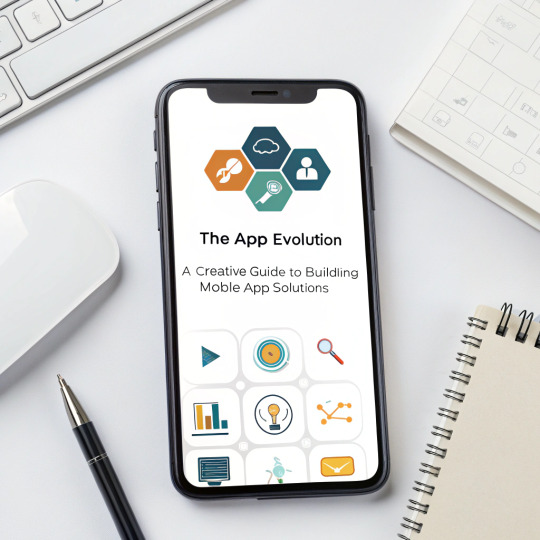
In digital world, mobile apps have become essential tools for businesses and consumers alike. Whether it's for shopping, communication, or managing daily tasks, mobile apps simplify life and drive engagement. This guide explores the evolution of app development and offers a step-by-step overview of the mobile app development process—perfect for entrepreneurs and businesses looking to create impactful mobile solutions.
Understanding Mobile App Development
Mobile app development involves designing, developing, testing, and deploying apps specifically for mobile and tablets. With billions of mobile phones users global market, businesses now consider apps as key touchpoints for engaging customers, delivering services, and driving revenue.
Here are many types of mobile apps, including:
Native Apps Native apps are built specifically for a single operating system—either iOS or Android—using platform-specific programming languages like Swift for iOS or Kotlin for Android. They offer the best performance, seamless integration with device features (camera, GPS, etc.), and a smooth user experience. However, developing native apps for multiple platforms requires separate codebases, which can increase cost and development time.
Hybrid Apps Hybrid apps combine features of native and web app into a single solution. They are developed using web technologies like HTML, CSS, and JavaScript, then wrapped in a native container. This allows the app to run across multiple platforms from a single codebase. While hybrid apps are cost-effective and quicker to develop, they may not perform as smoothly as native apps, especially for complex features.
Web Apps Web apps are responsive websites designed for mobile devices, offering an app-like experience while operating entirely within a web browser.. They are responsive, easy to update, and accessible without requiring installation from app stores. Though they’re great for lightweight applications, they have limited access to device features and typically offer lower performance compared to native and hybrid apps.
Choosing the right type depends on your goals, budget, and the user experience you want to deliver.
The Creative Journey: Mobile App Development Process
The mobile app development process involves many stages, each requiring collaboration between developers, designers, and stakeholders. Here's a breakdown of each step:
Idea and Research Every app begins with a problem to address. Define its core purpose, identify your target audience, and highlight what makes it different from existing solutions. Conduct thorough market research to validate your concept and analyze the competition.
Strategy and Planning Set goals for your app and decide on key features. Choose between platforms (iOS, Android, or both), and define the technical needs . During this phase, you’ll also decide whether to build your app in-house or hire a professional app development company.
Design and Prototyping UI/UX designers develop wireframes and prototypes to map out the app’s appearance and functionality. A well-crafted, user-friendly interface ensures a seamless experience and boosts user engagement.
App Development This is the crucial part of the mobile app development cycle. Developers write the code, integrate APIs, and build the app’s front-end and back-end functionalities. Whether using native or cross-platform technologies, clean and scalable code is essential.
Testing and Quality Assurance Before launching, your app must undergo thorough testing. QA specialists check for bugs, performance issues, security vulnerabilities, and overall usability. This ensures a smooth experience for your end-users.
Launch and Deployment Once tested and approved, the app is submitted to the Apple App Store and/or Google Play Store. Each platform has guidelines and approval processes. A well-executed launch includes marketing, user onboarding, and collecting feedback.
Maintenance and Updates App development doesn’t stop at launch. Regular updates, bug fixes, and feature enhancements are crucial to keep your app relevant and competitive in the market.
Why the Mobile App Development Process Matters
Skipping steps or rushing through the mobile app development process can lead to poor performance, low user engagement, or app failure. In the app development process every part have crucial role in building flexible, secure, and user-friendly product . Businesses that follow a well-structured process benefit from faster time to market, reduced costs, and higher customer satisfaction.
Tips for a Successful App Development Journey
Focus on client requirement – Design with the end user in mind to assure value and usability.
Keep it simple – Start with an MVP (Minimum Viable Product) to test and iterate.
Invest in quality – Hire experienced developers or an agency specializing in mobile app development.
Prioritize performance – Speed, security, and reliability are non-negotiable.
Stay updated – Trends change rapidly; keep up with the latest technologies and user preferences.
Final Thoughts
The increasing demand of mobile app development is transforming digital market and revolutionizing how users connect with technology. By understanding the full scope of the mobile app development process, businesses can create smarter, more impactful digital products. Whether you’re building your first app or scaling an existing one, strategic planning and creativity are the keys to success.
#Mobile app development process#app development process#app development cycle#mobile app development cycle#mobile app development#app development#top app development#best app development
1 note
·
View note
Text
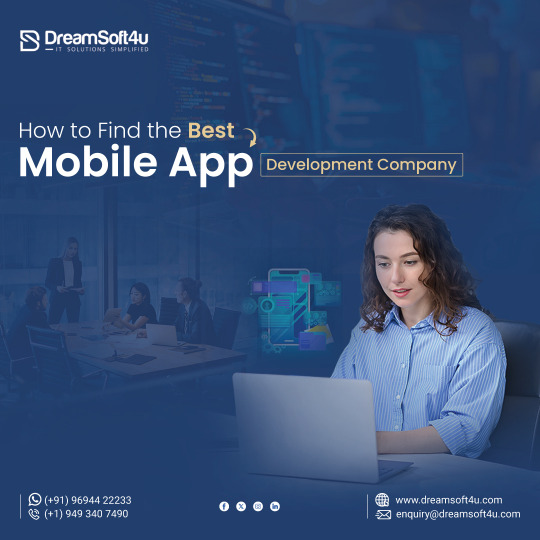
Choosing the right mobile app development company is crucial for turning your ideas into a successful app. You can make an informed decision by knowing what you need, reviewing past work, checking experience, assessing tech skills, reading reviews, understanding their process, and comparing costs wisely.
#mobile app development services#mobile app development cost#mobile app development process#android app development#ios app development
0 notes
Text
5 Essential Tips for a Secure Mobile App Development Process
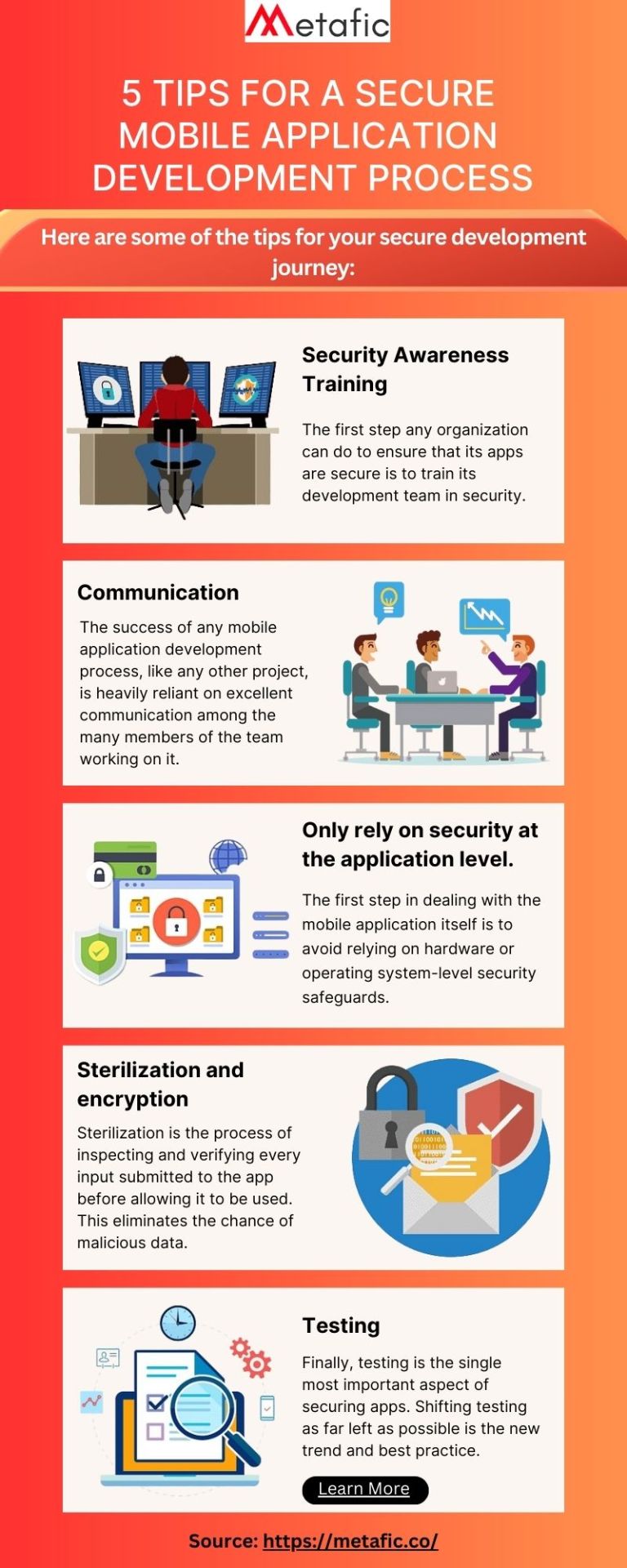
Explore expert insights on building secure mobile applications with this infographic. Discover crucial tips and best practices that ensure your app development process prioritizes security, enhancing user trust and app reliability. Visit: https://bit.ly/3KLYqPc
#mobile app development#mobile application development#mobile app development process#app development tips#mobile app development guide
0 notes
Text
Mobile App Development Services in USA
Mobiloitte- your one-stop solution for Mobile App development. Our team of experts crafts cutting-edge applications with seamless user experiences and stunning designs. Enjoy features like custom app development, cross-platform compatibility, secure data handling, and integration with third-party services. Benefit from increased brand visibility, customer engagement, and revenue growth. Transform your ideas into reality with Mobiloitte!
Visit : https://mobiloitte.us/
#Mobile App Development by Mobiloitte USA#Mobile app development#Mobile app development company#Custom mobile app development#Mobile app development services#Mobile app development USA#Mobiloitte USA#Hire mobile app developers#Mobile app development cost#Mobile app development process#Mobile app development trends
0 notes
Text
Step-by-Step Process: Developing Mobile Apps in 2024
Explore the complete guide to the mobile app development process. In this blog, we have covered important topics such as why it is crucial to opt for the best mobile app development services provider, the detailed process, and a summary. However, here is a brief overview of the mobile app development process within 6 easy steps:
Conceptualisation
Wireframing
Design & Development
Testing & Optimising
Launching
Marketing For more info, read our insightful blog verified by the industry tech experts!
0 notes
Text
In this podcast, you will explore the top Flutter app state management architectures in 2024 and make informed decisions backed by expert insights for optimal performance, scalability, and user satisfaction.
#flutter state management architecture#state management architecture#hire Flutter developers#hire Flutter developer#Flutter app development#mobile app development process#Flutter app development company#Dedicated Flutter App Developers#Flutter App Developer#Flutter Mobile App Developer#Hire Flutter App Developers#Hire Flutter Agency
0 notes
Text
0 notes
Text
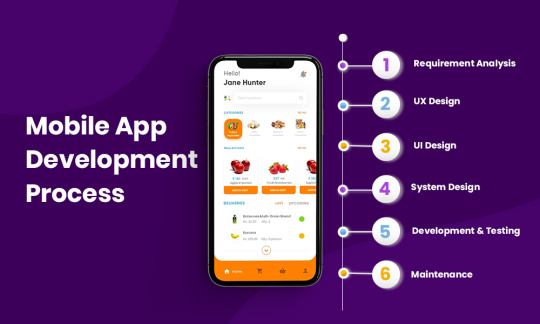
This infographic shows us how mobile apps are created. To know more, visit our website.
#app development#mobile app#mobile app development#mobile app development services#mobile app development process
0 notes
Text
Helpful insight is a leading mobile app development provider in USA. Creating a successful mobile app involves a structured development process. This step-by-step guide outlines the essential stages, from initial planning and design to development, testing, and deployment.
1 note
·
View note
Text

So, dear Tumblr users!
Please give this post some attention! My development team and I are making a game in the yandere horror genre. My videos don't fly on Tik Tok, and things aren't any better on Tumblr. There are only 10 subscribers in my Telegram channel. We are very worried and don’t understand what we are doing wrong. Please, if you are interested in this post, like it and go to my tg channel or TikTok
I will leave links to my social networks below: TikTok: __h.e.i.w.a_ Telegram: https://t.me/visual_novel_YAM
#art#artwork#artists on tumblr#my art#digital art#illustration#drawing#character design#art process#ot#original character#oc art#oc#otome game#otome#otaku#game character#gaming#game#gamedev#game making#pc games#game development#mobile app development#painting#ibispaint art#ibispaintdrawing#made in ibis paint#ibispaintx
14 notes
·
View notes
Text
1 note
·
View note
Text
#How to convert sketches into code using Firebase#Build mobile apps from sketches Firebase#Turn wireframes into functional apps with Firebase#Firebase Studio app design to code#Firebase app development process#Firebase Studio design workflow#Firebase UI design to app conversion#best tools to convert design to code#how to use Firebase Studio for prototyping#UI to code automation Firebase#design to deployment Firebase Studio
0 notes
Text
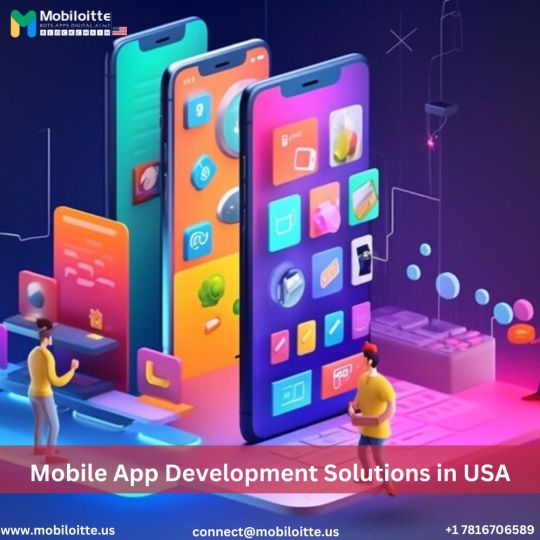
Mobile App Development Solutions in USA
Visit: https://www.mobiloitte.com/mobile-application-development/
Website: https://www.mobiloitte.us/
Call at: +1 7816706589
#Mobile App Development by Mobiloitte USA#Mobile app development#Mobile app development company#Custom mobile app development#Mobile app development services#Mobile app development USA#Mobiloitte USA#Hire mobile app developers#Mobile app development cost#Mobile app development process#Mobile app development trends
0 notes
Text
Navigating the App Store Submission Process: Tips and Best Practices

The journey from a brilliant app idea to seeing it live on the App Store can be thrilling, but the submission process itself? Often, it feels like navigating a labyrinth. Apple's stringent guidelines and review process, while ensuring quality and security, can be daunting. Fear not! This blog will equip you with the essential tips and best practices to streamline your app submission and increase your chances of a smooth approval.
1. Understand Apple's App Store Guidelines (ASG): Your Holy Grail
Before writing a single line of code, dive deep into the Apple App Store Guidelines. They are the foundation of the submission process. Familiarize yourself with:
Design Guidelines: Ensure your app aligns with Apple's Human Interface Guidelines (HIG) for a consistent user experience.
Functionality Guidelines: Understand the prohibited functionalities and ensure your app's features comply.
Business Guidelines: Be aware of Apple's policies on in-app purchases, subscriptions, and advertising.
Privacy Guidelines: Prioritize user privacy and data security. Clearly outline your data collection and usage practices.
2. Thorough Testing: Bug-Free is the Way to Be
Apple prioritizes a seamless user experience. Rigorous testing is crucial.
Device Diversity: Test your app on a variety of iOS devices and screen sizes.
Beta Testing: Utilize TestFlight to gather feedback from real users before submitting.
Edge Cases: Identify and address potential issues that might arise under unusual circumstances.
Performance Testing: Ensure your app is responsive and doesn't drain battery excessively.
3. Optimize Metadata: Your App's First Impression
Metadata is how users discover your app. Make it count!
App Name: Keep it concise, relevant, and memorable.
Keywords: Research and use relevant keywords to improve search visibility.
App Description: Clearly explain your app's features and benefits. Highlight its unique value proposition.
Screenshots and App Previews: Showcase your app's best features with high-quality visuals.
Category Selection: Choose the most appropriate category to reach your target audience.
4. Prepare for Review: Anticipate Questions
Apple's review team might have questions about your app's functionality or content. Be prepared to provide:
Demo Account: If your app requires login, provide a demo account for review.
Test Data: Include relevant test data to demonstrate your app's functionality.
Explanatory Notes: If your app has unique features or requires specific configurations, provide clear instructions.
Contact Information: Ensure your contact information is accurate and up-to-date.
5. App Store Connect: Your Central Hub
App Store Connect is your portal for managing your app submissions.
Accurate Information: Double-check all information before submitting, including pricing, availability, and localization.
Version Control: Utilize version control to track changes and manage updates.
Review Status: Monitor your app's review status and respond promptly to any feedback from Apple.
Resolution Center: Use the resolution center to communicate with Apple's review team and address any issues.
6. Localization: Reach a Global Audience
If your app targets a global audience, localization is essential.
Translate Content: Translate your app's text, metadata, and visuals into relevant languages.
Cultural Adaptation: Consider cultural nuances and adapt your app's design and functionality accordingly.
Right-to-Left Support: Ensure your app supports right-to-left languages if necessary.
7. Stay Updated: Apple's Policies Evolve
Apple's App Store Guidelines and policies are subject to change. Stay informed about the latest updates to ensure your app remains compliant.
Apple Developer Website: Regularly check the Apple Developer website for announcements and updates.
WWDC Sessions: Attend or watch WWDC sessions to learn about new features and guidelines.
Developer Forums: Engage with the developer community and stay informed about industry best practices.
Also read : How machine learning can help revamp mobile app ?
8. Don't Give Up: Rejections are Part of the Process
App rejections are common. Don't be discouraged.
Understand the Reasons: Carefully review the rejection reasons provided by Apple.
Address the Issues: Make the necessary changes to comply with the guidelines.
Resubmit with Clear Explanations: Clearly explain the changes you've made in your resubmission notes.
By following these tips and best practices, you can navigate the App Store submission process with confidence and increase your chances of a successful launch. Remember, patience, attention to detail, and a commitment to quality are key. Good luck!
#mobile app development company in london#mobile app designers in london#app development company in london#mobile app developer in london#app developer in london#Navigating the App Store Submission Process: Tips and Best Practices
0 notes
Text
Which Flutter App State Management Architecture Is Best in 2024?

With the Flutter app, the owner will know how to deal with the world of state management architecture, which is crucial. It significantly affects the maintainability, scalability, and performance of the application. Flutter is famous for its adaptability and supports several state management strategies, such as Bloc, Riverpod, Redux, and Provider. Recognizing the slight distinctions between each architecture is necessary to determine the project. Thus, it becomes essential to hire Flutter developers who are skilled in these techniques. This article covers state management architectures in-depth and emphasizes the need to employ experienced Flutter developers for smooth implementation and optimization.
Top 7 State Management Architecture in Flutter App Development
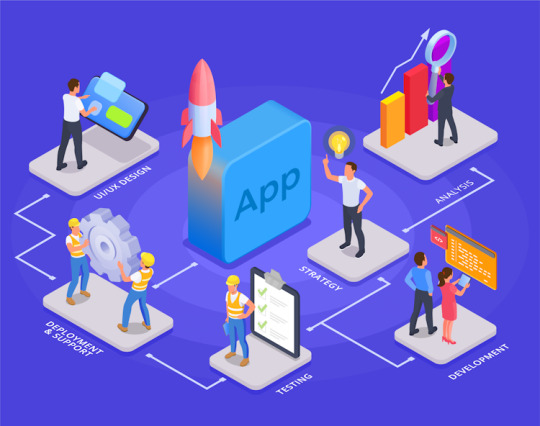
The top seven state management architectures in Flutter app development provide various solutions. Every architecture has unique benefits that must meet the needs of different projects. Here is an overview of the seven-state management architecture.
1. Provider
The Provider is easy to use, perfect for smaller projects or anyone looking for a solution with a smaller boilerplate. Development is streamlined by its small size. To make the best possible use of it, you must understand how it works in Flutter app development. Experts with Flutter programming skills will ensure your application is thoroughly utilized by its simple yet powerful features. If flexibility and adaptability are critical, this design guarantees an effective development without compromising functionality.
2. GetX
Flutter’s GetX is a state management system that is notable for its simplicity of use and adaptability. It streamlines the development process by combining a small package of dependency injection, route management, and state management. GetX minimizes boilerplate code by depending on the responsive programming. However, it provides a simple and effective solution for developing the Flutter app. It is a solid option for Flutter app development for its easiness and simplicity in your mobile app development process. Hence, it is a lightweight, modular design and gives outstanding performance.
3. RiverPod
Riverpod is a state management library for Flutter created by the concepts Provider is introducing. It also helps you improve the syntax by offering scalability and flexibility in your project. It also has a more robust approach to dependency injection and is best for larger Flutter projects. Its declarative and reactive programming model allows the programmers to manage the application state efficiently. With its ease of use, Riverpod provides an excellent solution for those clients who want to create scalable and maintainable Flutter application development.
4. BLoC (Business Logic Component)
The Flutter state management design pattern known as BLoC, or “Business Logic Component,” strongly emphasises separating business logic and the UI layer. By the ideas of reactive programming, BLoC uses streams to manage and distribute modifications to the application’s state. Large and scalable Flutter apps may benefit significantly from their organised and straightforward approach to managing complex logic. Maintainability and testability are boosted by BLoC, which splits business logic into separate components. To implement it, streams of states and events are developed, giving the one-way data flow and allowing developers to manage and update the application state efficiently.
5. Redux
A dependable state management library called Redux is frequently integrated into web development frameworks such as Flutter. Redux, influenced by the Flux architecture, strengthens an application’s state into a single store. Its unidirectional data flow ensures predictable behaviour and provides troubleshooting. Reducers are pure functions that act as accelerators for state changes in events. Redux integration with Flutter is made more accessible via the flutter_redux package. Redux is a practical choice for handling complicated states in Flutter applications due to its advantages, which include a clear separation of concerns, testability, and scalability.
6. Fish-Redux
A Flutter framework called Fish-Redux was motivated by the Redux architecture pattern. Fish-Redux extends the principles of Redux specifically for Flutter applications, allowing effective state management. It encourages concern separation, modular development, and unidirectional data flow. Fish-Redux adds concepts like “Page” and “Adapter” to organise code into acceptable sections. Fish-Redux is an attractive option for developers looking for a structured and reactive state management solution in their projects due to its focus on simplicity and scalability. It also improves the maintainability of Flutter applications and accelerates the mobile app development process simultaneously.
7. flutter_reactive_value
flutter_reactive_value is a lightweight yet powerful state management solution in Flutter, prioritizing simplicity and performance. Tailored for micro-apps or projects that demand a minimalist approach, it operates as the hummingbird of state management—compact yet mighty. By embracing its reactive nature, flutter_reactive_value enables developers to efficiently handle state in a concise package, making it an excellent choice for those who value efficiency and simplicity in their Flutter applications.
Conclusion
In summary, selecting the best state management architecture is crucial for developing Flutter apps because it affects maintainability, scalability, and overall performance. As a result of Flutter’s flexibility, various solutions are available to meet different project requirements, such as Provider, GetX, Riverpod, BLoC, Redux, Fish-Redux, and flutter_reactive_value. Hiring skilled Flutter developers is crucial to guaranteeing smooth deployment and optimization. Their proficiency with these state management strategies improves the effectiveness of development processes and encourages the development of scalable and maintainable apps. For the best results, think about partnering with a top Flutter app development company with a team of skilled developers knowledgeable about various state management architecture. The starting point of a successful Flutter app is a well-chosen option paired with familiar developers that provide both functionality and satisfaction to users.
Content Source: Flutter App State Management Architecture in 2024: A Comprehensive Guide
#flutter state management architecture#state management architecture#hire Flutter developers#hire Flutter developer#Flutter app development#mobile app development process#Flutter app development company#Dedicated Flutter App Developers#Flutter App Developer#Flutter Mobile App Developer#Hire Flutter App Developers#Hire Flutter Agency
0 notes